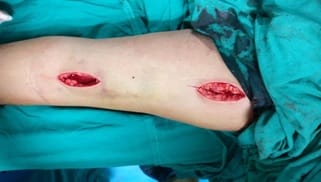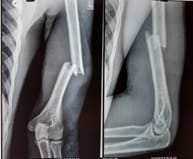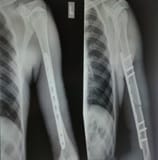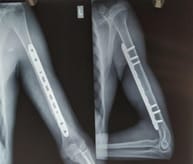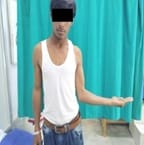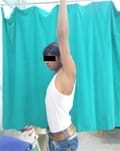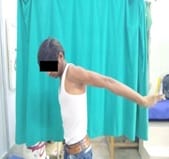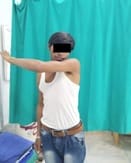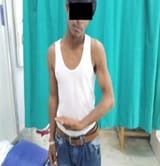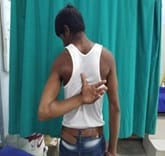A clinical study to evaluate the outcome of diaphyseal humerus fracture in adult age group treated with anterior biological plating
Vala G.1, Mahendrabhai Patel J.2*, Vora J.3
DOI: https://doi.org/10.17511/ijoso.2020.i02.06
1 Gaurav Vala, Associate Professor, Department of Orthopaedics, C.U. Shah Medical College, Surendranagar, Gujarat, India.
2* Jay Mahendrabhai Patel, Resident Doctor, Department of Orthopaedics, C.U. Shah Medical College, Surendranagar, Gujarat, India. https://orcid.org/0000-0003-1453-1649
3 Jinesh Vora, Associate Professor, Department of Orthopaedics, C.U. Shah Medical College, Surendranagar, Gujarat, India.
Background: Anterior biological plating is one of the many options to treat diaphyseal humerus fractures in the adult age group. A clinical study was performed to evaluate outcomes over 6 months follow up period in 25 patients. Materials and Methods: The present study included 25 patients of the adult age group having diaphyseal humerus fracture treated with anterior biological plating between February 2018 to June 2019.Pathological, Malunited, and Gustilo Anderson open to grade 3 fractures were excluded from the study. Locking Compression Plating was done in all cases using the MIPO technique after closed indirect reduction. Functional outcome was assessedusing the DASH score at 6 months follow up. Results: The study consisted of 16 males and 9 females. The mean age was 42.36 years (range: 19-73 years).7 fractures out of 25 were 12A1, 2 were 12A2, 10 were 12A3,2 were 12B1 and 4 were 12B2 based on AO classification. Mean DASH score in the present study was 7.9 with 21 patients achieving excellent DASH Score and 4 patients achieving good DASH score with none of the patients having fair or poor DASH scores. Conclusion: ABP for mid-shaft humerus fractures is a safe and effective treatment modality yielding high rates of the union, excellent functional recovery, minimal biological disruption, better cosmesis, and superior patient satisfaction.
Keywords: Anterior biological plating (ABP), Minimal invasive plate osteosynthesis (MIPO), Diaphyseal humerus fractures, Shaft humerus fractures
| Corresponding Author | How to Cite this Article | To Browse |
|---|---|---|
| , Resident Doctor, Department of Orthopaedics, C.U. Shah Medical College, Surendranagar, Gujarat, India. Email: |
Vala G, Patel JM, Vora J. A clinical study to evaluate the outcome of diaphyseal humerus fracture in adult age group treated with anterior biological plating. Surgical Review Int J Surg Trauma Orthoped. 2020;6(2):99-104. Available From https://surgical.medresearch.in/index.php/ijoso/article/view/157 |


 ©
© 